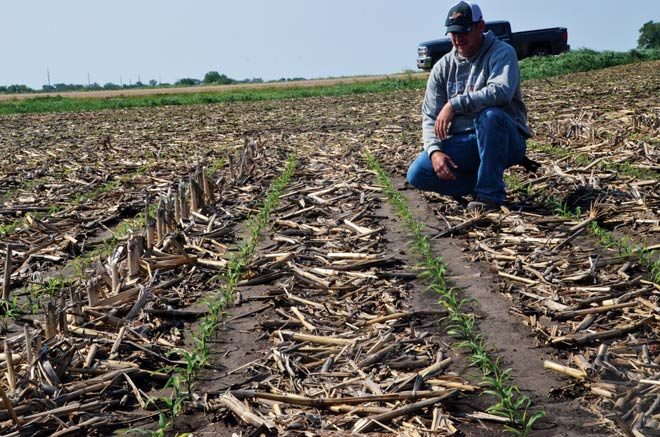No-Till Farmer
Get full access NOW to the most comprehensive, powerful and easy-to-use online resource for no-tillage practices. Just one good idea will pay for your subscription hundreds of times over.

When Kody Karloff transitioned from no-till to strip-till 2 years ago, he hoped the move would minimize early-season inconsistencies with corn and soybean emergence. Farming 3,200 acres of rolling hills and sloping ground in Yutan, Neb., one of the challenges Karloff encountered during 15 years of no-till was finding an ideal intersection between his planting window and field conditions.
“I’d get into different soil temperatures and moistures across the board trying to plant and it just never seemed to work. It never seemed to be that perfect time,” he says. “It was always a little wet or a little hard. We’d get corn that was at the V2 stage and then two plants away it would be just spiking out of the ground.
“It was very uneven, so that’s what prompted us to try strip-till as a way to create a better seedbed and more consistency. So far, we’ve been able to accomplish both.”
While Karloff struggled with syncing up his no-till planting schedule to match field conditions, his move to strip-till was well timed. Above average spring rains during his first 2 years proved to be a good test of how well the system worked in adverse conditions.
One of the early benefits Karloff saw was less water runoff and quicker infiltration into soils…